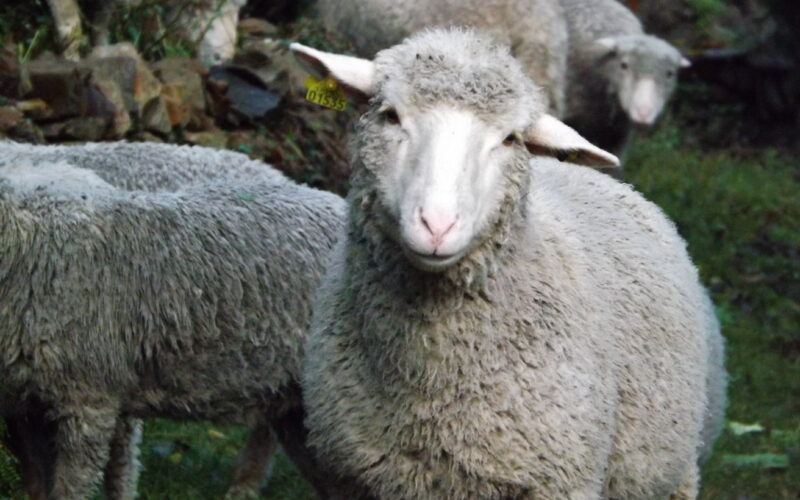What is regenerative agriculture?
Regenerative agriculture defines farming methods and techniques that enhance soil quality to restore biodiversity and thus reduce the impact of farming practices on the environment. The idea is to produce in a more reasoned and sustainable way while preserving the balance of the triptych: soil health, animals and plants.
More broadly, regenerative agriculture goes beyond simple agricultural practices, it is a truly holistic approach aimed at producing differently by freeing ourselves from products that are dangerous for the environment such as pesticides, fertilisers or agrochemicals. This approach to agriculture also takes into account the issue of human health, striving to use as few chemical inputs as possible that could end up in water, food or other products such as wool.

Regenerative agriculture thus focuses on conservation and rehabilitation actions. These actions give priority to :
- Protecting and regenerating the topsoil with a rebalancing of the minerals in the soil
- Optimising the water cycle
- Restoration of biodiversity and animal welfare
- Relationships within ecosystems
- Improving ecosystem services
- Reduction of synthetic inputs
- Bio-sequestration
- Development of local agriculture and support for local communities and economies that depend on soil for their livelihoods
- Offsetting CO2 emissions
As you can see, regenerative agriculture requires a real rethink of agriculture as we know it, but also a lot of time, patience and motivation to rethink conventional practices and methods.

In concrete terms, what are the methods and practices of regenerative agriculture?
Common techniques of regenerative agriculture include :
- Biochar
- Organic mulch
- Crop residue management
- Composting
- Cover crops
- Perennial crops
- Agroforestry
- Managed grazing
- Reduced tillage or no-till planting
The importance of soil health
A healthy soil promotes plant health, supports the ecosystem processes on which all life depends, promotes species biodiversity, healthy plants, fodder for animals, and healthy food and products from a healthy environment.
Soil therefore plays a very important role in regenerative agriculture and especially in the global carbon cycle. Soil is the world’s largest active carbon absorber. Plants take up carbon from the atmosphere, transform it into plant tissue and return it to the soil in the form of plant residues. Agricultural practices influence the amount of carbon that soils retain but also the amount of carbon that is released into the atmosphere.
The farming techniques used in regenerative agriculture improve soil health by increasing the organic matter and carbon content of the soil. With more sustainable agriculture and better soil management, soils have the potential to store much more atmospheric CO2. A high level of carbon improves the structure of the soil and thus increases its physical stability. This in turn improves soil aeration, drainage and water retention, and reduces erosion and nutrient leaching.
Thus, regenerative agriculture fixes our soils and positively influences environmental issues such as desertification, the carbon cycle, the water cycle and mitigates climate change.
Regenerative agriculture at Segard Masurel
Regenerative agriculture, is primarily aimed at South African farmers combating desertification, improving grass quality, producing in a more sustainable way while maintaining soil health, animal welfare and plant biodiversity. Segard Masurel is already working with farmers who ‘farm with nature’ and who have signed up to the Abelusi standard which emphasises continuous improvement in farm management practices. The Abelusi standards measure progress around the three pillars of sustainable wool, namely :
- Environmental sustainability
- Social responsibility
- Animal welfare
Segard Masurel, in collaboration with fashion brands, recognises and encourages the efforts of wool producers applying the principles of regenerative agriculture, and helps them to further integrate these principles into their business and farm management.
In conclusion, agriculture has the greatest potential to cool the planet, as photosynthesis absorbs carbon and cools the environment through transpiration. Indeed, past practices have resulted in typical losses of about 0.3% of soil per year over the past 100 years. This has resulted in the massive release of carbon into the air instead of storing it in the soil, the use of 10 times more energy to produce food, and the production of nutrient-poor food and inferior products.
Regenerative agriculture offers the opportunity to adopt a truly sustainable way of farming. Farmers can limit the impact of their activity on the environment while producing quality wool. Segard Masurel and its fashion brand partners see regenerative farming as a real investment for the good of the planet and the people.





